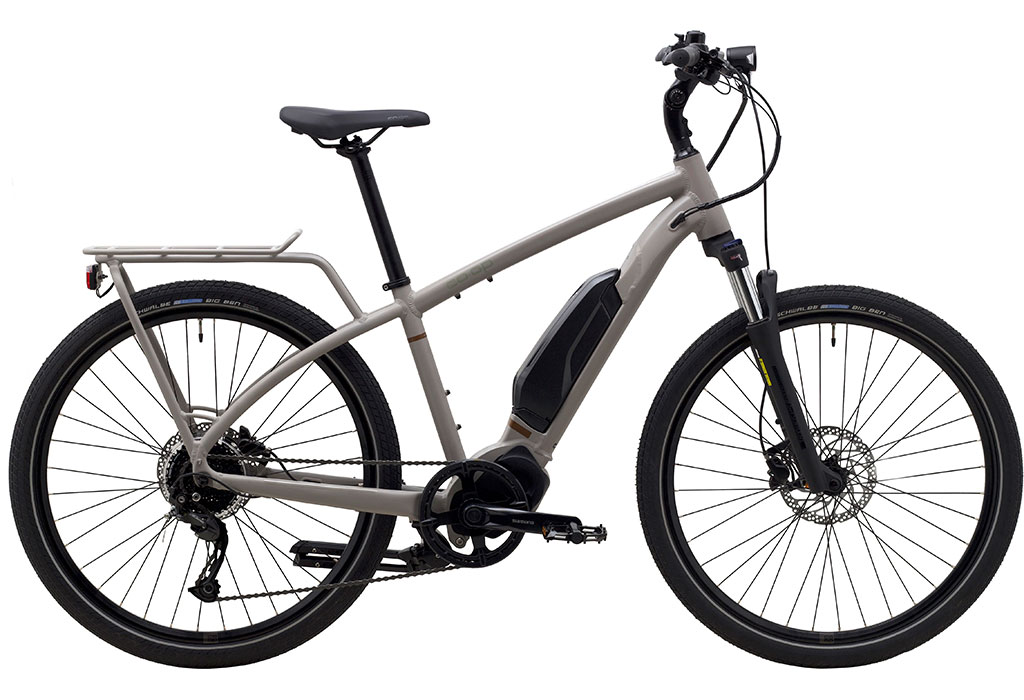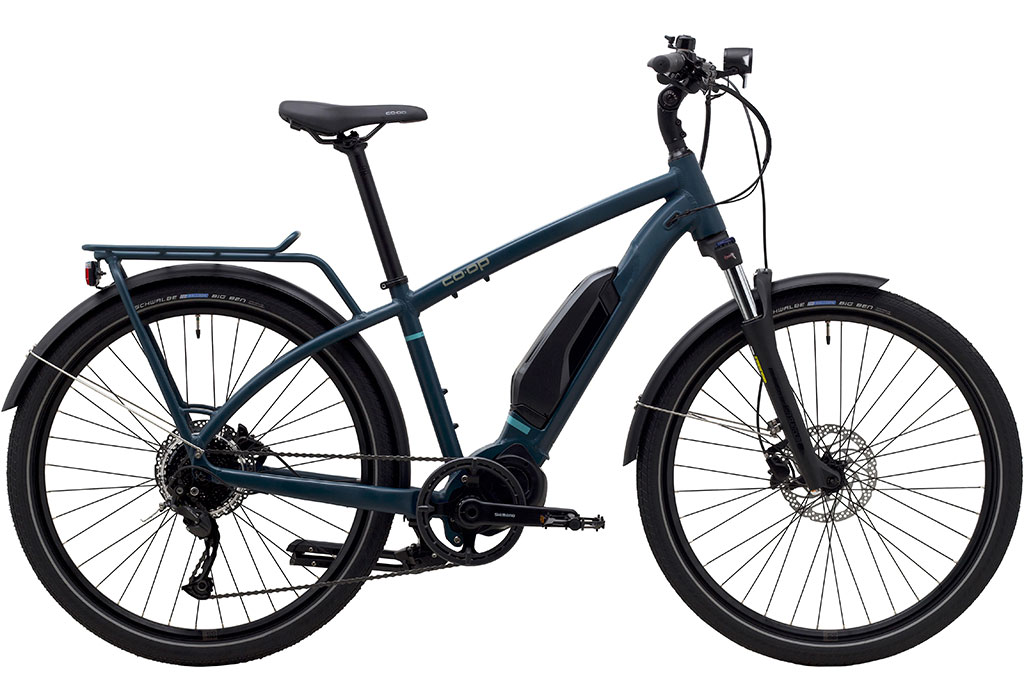Editor’s note: Rising bike demand and supply chains disrupted by COVID-19 have resulted in some sizes of these bikes already being out of stock. Bike manufacturing cycles have long lead times, too, so inventory levels will be impacted until the first quarter of 2021.
Since launching in 2017, Co-op Cycles bikes have been designed not just for our community but with them—a process REI calls cooperative design. This fall, with that same approach in mind, Co-op Cycles debuts its first-ever e-bikes with the new CTY e2.1 and CTY e2.2 models.
In developing the new line of e-bikes, the co-op conducted extensive research into the cycling preferences of potential e-bike riders (surveying more than 1,200 people in the U.S., including both members and nonmembers). The two prime motivations for purchasing an e-bike were “fun” and “health.” Co-op Cycles’ designers aimed to cash in on both with the new line, which contains class 1 pedal-assist rigs. (With class 1 e-bikes, the motor kicks in to aid pedaling up until the bike reaches 20 mph. To learn more about the different classifications, read Intro to Electric Bikes, the first part of our Electric Bike Basics series of articles.)
Ilya Brukhman, Co-op Cycles design lead, explains that many aspects of e-bike development require a different mindset and distinct design philosophy: “Because an e-bike purchase is a larger purchase, versatility is really important for e-bike riders.”
That’s the logic behind making CTY e2.1 and CTY e2.2 urban-and-beyond e-bikes, meaning they are an ideal vehicle for bike paths, streets and, thanks to all-terrain tires and a front suspension fork, nonpaved surfaces as well.
“With an e-bike, the equation that’s been the paradigm since bikes were minted has been flipped on its head,” Brukhman says. “Traditional bikes were generally designed around terrain or riding style. Bikes were getting lighter, so you could go farther and faster. But now, because you have this electric assistance, you don’t need to be in such an aggressive position. You don’t need to be so worried about having the lightest setup.” That allowed the design team to focus more on the full range of capabilities it was able to offer with these bikes.
The Differences Between CTY e2.1 and CTY e2.2
CTY e2.2 has a slightly more powerful motor, as well as a slightly more robust battery to power that motor. Because its motor also generates more torque out of its power plant, CTY e2.2 is also better suited to commuting, where you would regularly need to carry cargo and, perhaps, climb hills.
The final distinction between CTY e2.1 and CTY e2.2 is that the latter comes with fenders, another feature that all-weather commuters will appreciate. Below are key specs for each Co-op Cycles CTY e-bike:
| CTY e2.1 | CTY e2.2 | |
| Price | $1,799 | $2,199 |
| E-Bike Classification | Class 1: pedal assist up to 20mph | Class 1: pedal assist up to 20mph |
| Motor | Shimano E5000 250W with Shimano E8014 36V/418Wh battery (max torque output 40Nm) | Shimano E6100 250W with Shimano E8010 36V/504Wh battery (max torque output 60Nm) |
| Charge Time | 6.5 hours | 4 hours |
| Pedal-Assist Range | 50 miles | 50 miles |
| Number of Gears | 9 | 9 |
| Suspension | 75mm Suntour front suspension fork | 75mm Suntour front suspension fork |
| Brakes | Shimano Altus hydraulic disc brakes | Shimano Altus hydraulic disc brakes |
| Tires | Schwalbe Big Ben 27.5″ x 1.95″ | Schwalbe Big Ben 27.5″ x 1.95″ |
Other Key Components
Back to that initial customer insights research. It revealed another attribute that customers expect in an e-bike: convenience. That plays out in some of the component choices. Potential e-bike riders wondered how one parks a bike that’s heavier than traditional ones. Rather than simply adding a basic kickstand to address the concern, the Co-op Cycles team utilized a design common among electric scooters, which feature a more stable two-legged kickstand configuration. Voila!—worry-free parking.
Both CTY e-bikes also include a fully integrated rack, which provides a rock-steady cargo-carrying platform and saves customers the fuss of figuring out an after-market rack solution. That makes both the CTY e2.1 and e2.2 nicely set up for hauling groceries or your essential workday gear on a two-wheel commute.
Should you need to pedal home after dark, both CTY e-bikes have a fully integrated lighting system with a battery that runs off the bike’s rechargeable battery.
Both CTY e-bikes come in three unisex sizes, rather than the five size options you’ll find in traditional Co-op Cycles models. The smallest size is also a step-thru frame, making it easier for smaller riders to handle the bike at traffic stops. The bikes offer an additional way to adjust their fit to riders, because each comes with an easily adjustable handlebar stem.
The Future of E-Bikes
E-bikes represented the fastest growing segment of the U.S. cycling market in a 2018 report from The NPD Group (an increase of eightfold between 2014 and 2017), and they are poised to grow even faster in the years ahead. E-bike sales in June of this year were up 190 percent compared to the same time last year, The NPD Group also found. And e-bike sales worldwide are projected to reach 40 million bikes annually by 2023, according to a study by Deloitte. Another bonus is that e-bike riders worldwide invariably replace some car trips with e-bike trips, according to research.
E-bikes also appeal to more cyclists, including those who had previously given up on the sport but are now reaping the benefits of riding an e-bike. “Co-op Cycles strives to be the people’s bike,” says Cyndi Mundhenk, Co-op Cycles product manager. “We make them to appeal to a wide range of riders.”
The trend is clear: The people’s bike is on a roll.


